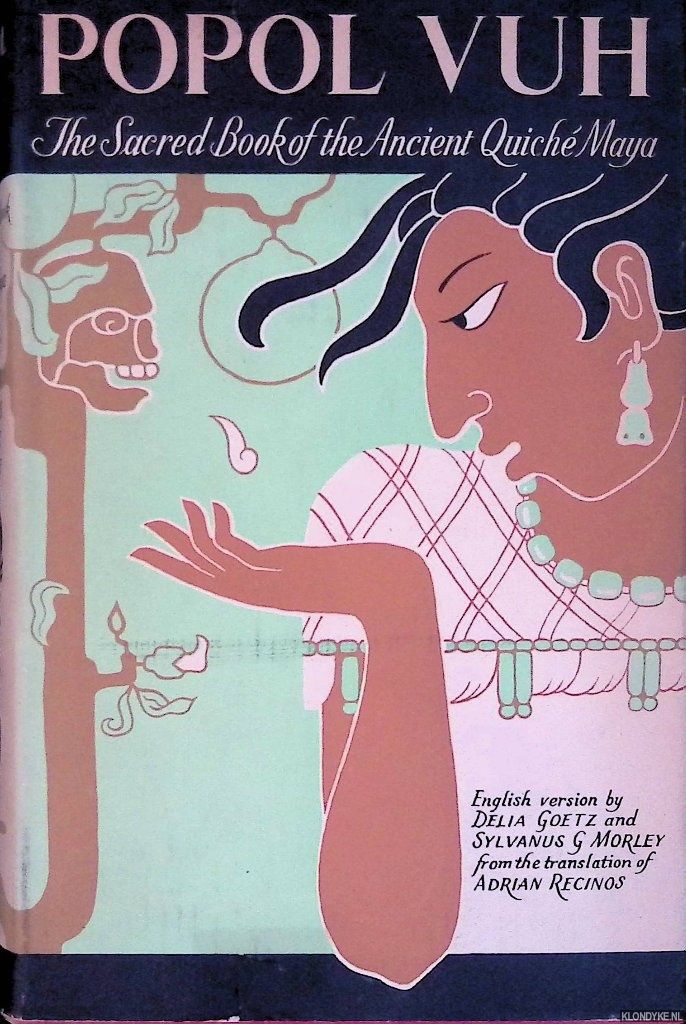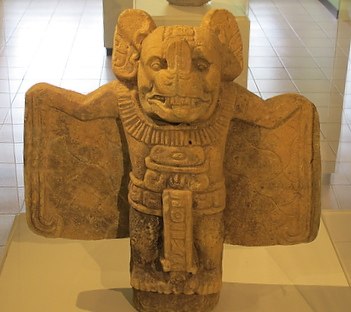The Popol Vuh, also known as the Mayan Book of the Council, is a foundational text of the K’iche’ Maya people of Guatemala.
It’s a complex and multifaceted work, offering insights into various aspects of their culture, including:
- Creation Myth: The Popol Vuh begins with the origin story of the world. It describes a primordial state of emptiness before the gods, Tepeu and Gucumatz, emerged and created the earth, sky, and other celestial bodies. They then attempted to create humans, first from clay and then from wood, but neither attempt proved successful. Finally, they succeeded by carving humans from maize, considered a sacred crop by the Maya.
- Hero Twins: The narrative then shifts to the Hero Twins, Hunahpu, and Xbalanque. These trickster heroes overcome various challenges, including defeating the arrogant Lords of Xibalba, the Mayan underworld. Their triumphs represent the triumph of good over evil and are symbolic of the cyclical nature of life and death.
- K’iche’ History: The latter parts of the Popol Vuh delve into the history and lineage of the K’iche’ people. It chronicles the rise and fall of their kingdoms, detailing their migrations, wars, and achievements. This section serves as a historical record and a source of pride for the K’iche’ people.
Significance:
- Cultural and Religious Importance: The Popol Vuh is central to K’iche’ cultural and religious identity. It provides insights into their worldview, beliefs about creation, the importance of maize, and the cyclical nature of existence.
- Historical Record: It holds immense historical value, offering a window into the pre-Columbian Maya civilization and serving as a valuable source of information about their society, customs, and political structures.
- Survival and Transmission: Despite the Spanish conquest and attempts to suppress indigenous cultures, the Popol Vuh survived through oral tradition and was eventually transcribed by a Spanish priest, Francisco Ximénez, in the 18th century.
Legacy:
The Popol Vuh remains a vital source of knowledge and inspiration for the K’iche’ people and continues to be studied by scholars and enthusiasts of Mesoamerican history and mythology. It serves as a reminder of the rich cultural heritage and vibrant history of the Mayan people.
The Popol Vuh: A Window into Mayan Mythology and History
It’s a complex and multifaceted work, offering insights into various aspects of their culture:
Content:
- Creation Myth: The Popol Vuh begins with the origin story of the world. It describes a primordial state of emptiness before the gods, Tepeu and Gucumatz, emerged and created the earth, sky, and other celestial bodies. They then attempted to create humans, first from clay and then from wood, but neither attempt proved successful. Finally, they succeeded by carving humans from maize, considered a sacred crop by the Maya.
- Hero Twins: The narrative then shifts to the Hero Twins, Hunahpu, and Xbalanque. These trickster heroes overcome various challenges, including defeating the arrogant Lords of Xibalba, the Mayan underworld. Their triumphs represent the triumph of good over evil and are symbolic of the cyclical nature of life and death.
- K’iche’ History: The latter parts of the Popol Vuh delve into the history and lineage of the K’iche’ people. It chronicles the rise and fall of their kingdoms, detailing their migrations, wars, and achievements. This section serves as a historical record and a source of pride for the K’iche’ people.
Significance:
- Cultural and Religious Importance: The Popol Vuh is central to K’iche’s cultural and religious identity. It provides insights into their worldview, beliefs about creation, the importance of maize, and the cyclical nature of existence.
- Historical Record: It holds immense historical value, offering a window into the pre-Columbian Maya civilization and serving as a valuable source of information about their society, customs, and political structures.
- Survival and Transmission: Despite the Spanish conquest and attempts to suppress indigenous cultures, the Popol Vuh survived through oral tradition and was eventually transcribed by a Spanish priest, Francisco Ximénez, in the 18th century.
Legacy:
The Popol Vuh remains a vital source of knowledge and inspiration for the K’iche people and continues to be studied by scholars and enthusiasts of Mesoamerican history and mythology. It serves as a reminder of the rich cultural heritage and vibrant history of the Mayan people.
Further Exploration:
For deeper exploration, consider checking out these resources (without URLs):
- Dennis Tedlock’s translation of the Popol Vuh: “Popol Vuh: The Definitive Edition of the Mayan Book of the Dawn of Life and the Glories of Gods and Kings”
- Michael Coe’s book: “The Maya”
- Online resources from reputable museums, universities, or cultural institutions focused on Mayan history and culture.
The Popol Vuh Museum houses such a significant collection of Mayan art. Having this museum named after the Popol Vuh, a sacred Mayan text, further emphasizes the importance placed on preserving and understanding Mayan culture in Guatemala.
Knowing this information, it would be interesting to learn more about:
- Specific Mayan artifacts are housed in the museum. Are there any particularly remarkable pieces or collections?
- Exhibitions and educational programs offered by the museum. How does it contribute to public understanding of Mayan art and history?
- The connection between the museum’s collection and the Popol Vuh. Does the museum showcase any artifacts directly related to the creation story or the Hero Twins?
Exploring these aspects could provide a deeper understanding of the Museo Popol Vuh and its role in preserving and promoting Mayan heritage.




 Ethical Fashion Guatemala
Ethical Fashion Guatemala Ethical Fashion Guatemala
Ethical Fashion Guatemala